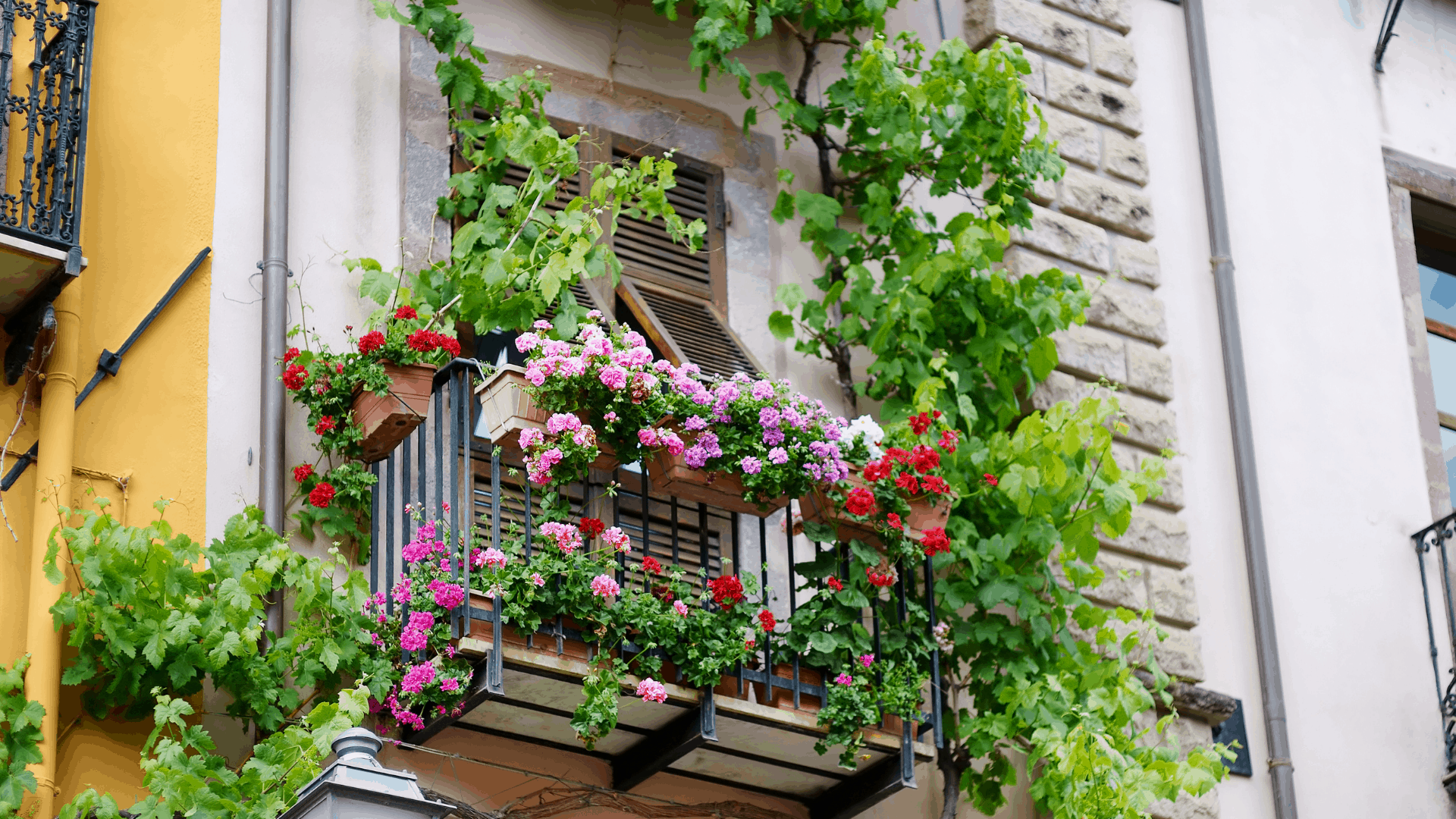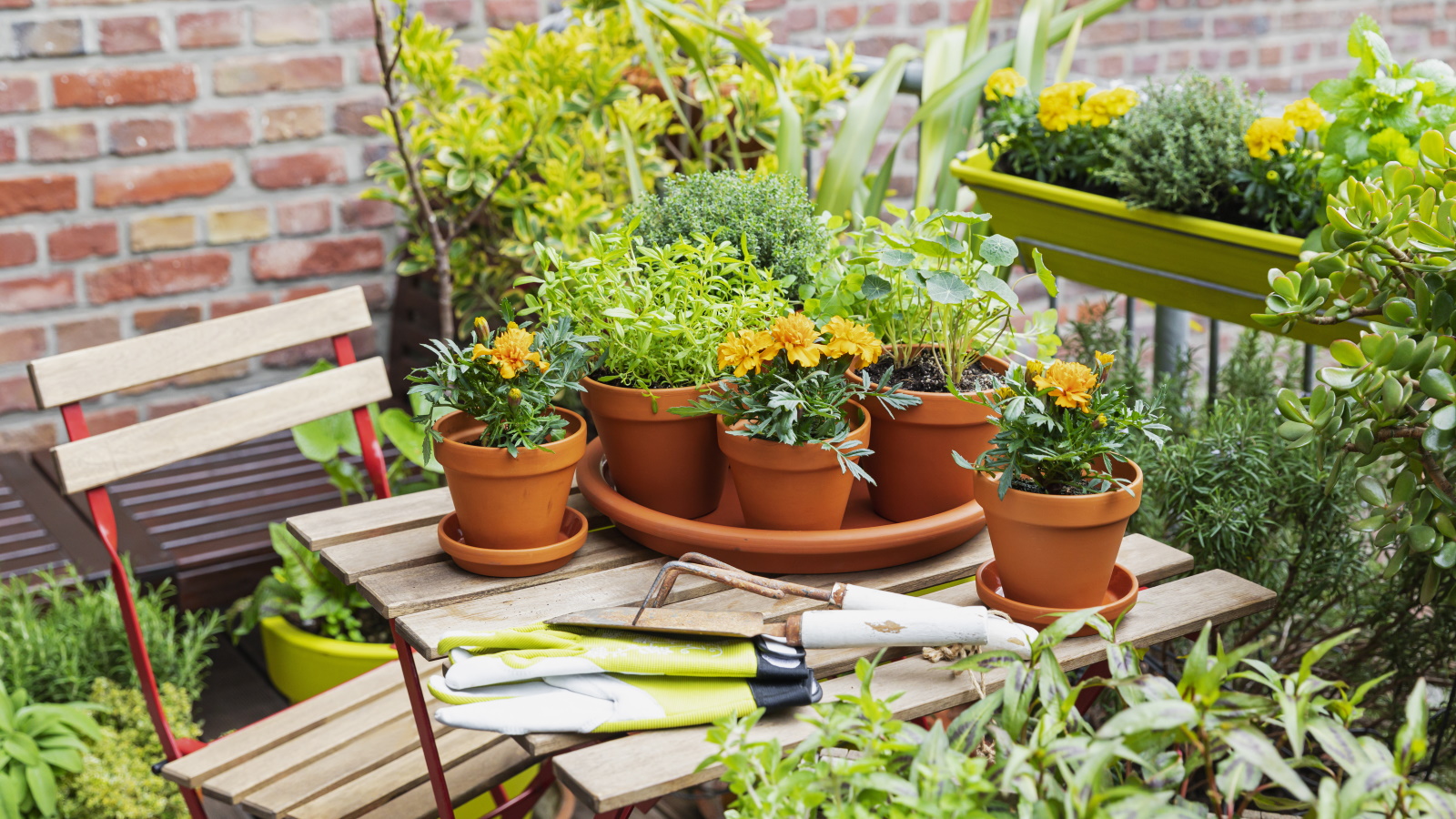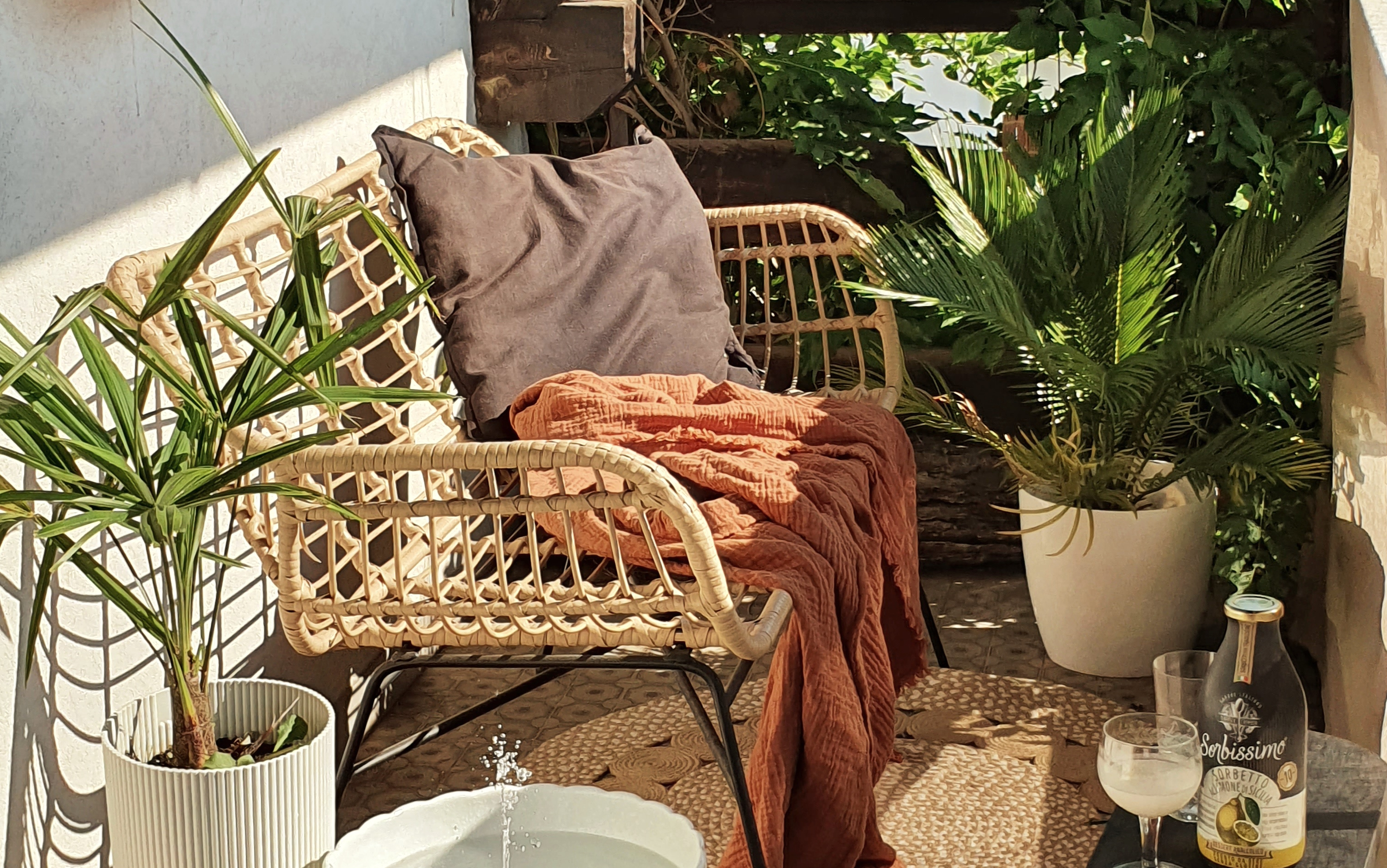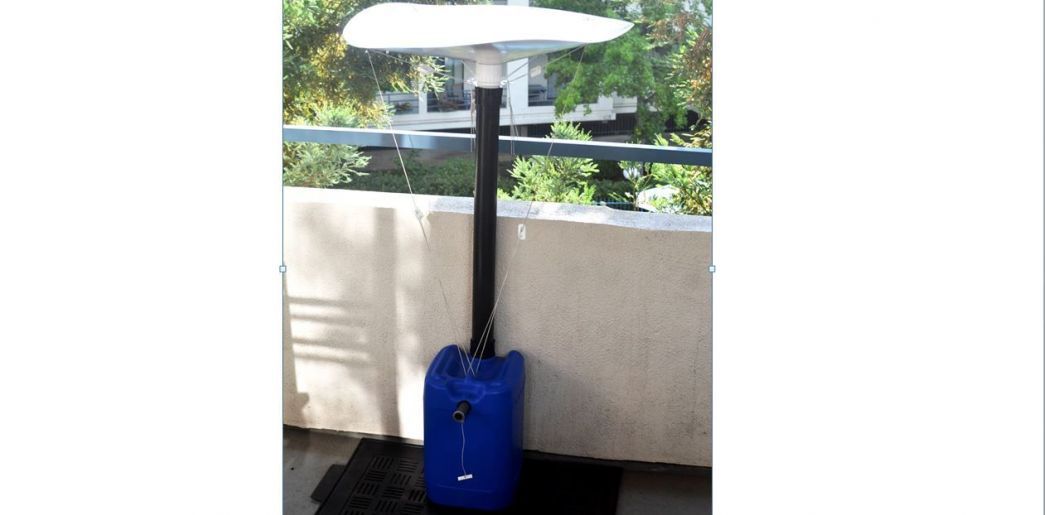How to Turn a Tiny Balcony into a Green Oasis
Transform your small urban space into a lush retreat with these practical tips and creative solutions.
Why Create a Balcony Garden?
- Brings nature into your urban living space
- Grow your own herbs and vegetables
- Improves air quality and provides cooling
- Creates a peaceful retreat for relaxation
- Attracts beneficial wildlife like butterflies and birds

1. Maximize Space with Vertical Gardening
Going vertical is the key to transforming a tiny balcony into a lush garden space. When you have limited floor area, the walls and railings become valuable real estate for your plants.
Vertical Gardening Solutions:
-
AWall-mounted planters: Attach to walls to create a living wall effect without taking up floor space.
-
BHanging baskets: Suspend from ceiling or overhangs to add greenery at eye level.
-
CRailing planters: Hook over balcony railings to maximize perimeter space.
-
DTiered plant stands: Stack plants vertically to multiply your growing area.
-
ETrellises: Support climbing plants like vines and creepers.

Pro Tip:
When installing wall-mounted planters, ensure they’re securely fastened. For rented apartments, consider tension rod systems or freestanding vertical garden structures that don’t require drilling.

Hanging pocket planters utilize vertical space

Creative railing planters

Railing garden maximizes perimeter space
2. Choose the Right Containers
Container selection is crucial for balcony gardens. The right pots and planters will not only complement your space aesthetically but also provide the proper environment for your plants to thrive.
Container Considerations:
-
AMaterial: Consider weight, durability, and insulation properties.
- Plastic: Lightweight, affordable, retains moisture
- Terracotta: Breathable, natural look, heavier
- Fabric: Lightweight, excellent drainage, foldable
- Metal: Durable, modern look, can overheat
-
BSize: Match pot size to plant needs and available space. Larger containers retain moisture better and require less frequent watering.
-
CDrainage: Ensure all containers have proper drainage holes to prevent root rot.

Weight Considerations:
Check your balcony’s weight restrictions before adding multiple heavy containers. For upper-floor apartments, consider lightweight materials like plastic or fabric pots. Use quality potting mix designed for containers rather than garden soil, which is too heavy and compacts easily.
Space-Saving Container Ideas
- Stackable planters
- Railing boxes that fit over railings
- Hanging baskets and macramé hangers
- Window boxes for exterior window sills
- Vertical pocket planters
Multi-Functional Containers
- Planters with built-in water reservoirs
- Self-watering containers
- Storage benches with planting space
- Tiered herb planters
- Railing planters with hooks for tools
DIY Container Ideas
- Upcycled wooden crates
- Repurposed tin cans
- Shoe organizers for vertical planting
- Wooden pallets transformed into planters
- PVC pipe vertical gardens
3. Select the Perfect Plants
Choosing the right plants for your balcony garden depends on several factors: available sunlight, your climate, the space you have, and your gardening goals. Here are plant suggestions categorized by light conditions and purpose:
Plants by Light Conditions:
Full Sun Balconies (6+ hours direct sun)
- Herbs: Rosemary, thyme, basil, lavender, sage
- Vegetables: Tomatoes, peppers, eggplants
- Flowers: Petunias, marigolds, zinnias, sunflowers
- Succulents: Aloe, jade plant, echeveria
Partial Sun/Shade (3-6 hours direct sun)
- Herbs: Mint, parsley, cilantro, chives
- Vegetables: Lettuce, kale, swiss chard, peas
- Flowers: Impatiens, begonias, coleus, fuchsia
- Foliage: Caladium, hosta, ferns
Shade (Less than 3 hours direct sun)
- Herbs: Mint, chives, parsley
- Vegetables: Microgreens, leaf lettuce
- Flowers: Begonia, impatiens
- Foliage: Pothos, peace lily, ferns, snake plant

Space-Saving Plant Selection Tips:
- Choose dwarf or compact varieties specifically bred for containers
- Look for “patio” or “balcony” varieties of vegetables
- Consider plants that serve multiple purposes (e.g., ornamental edibles)
- Use vertical-growing or trailing plants to maximize space
Edible Balcony Plants
Perfect for a productive garden that provides fresh produce
- Container tomatoes (Cherry, Tumbling Tom)
- Lettuce, arugula, spinach
- Strawberries (hanging varieties)
- Dwarf citrus trees
- Herbs like basil, mint, thyme
- Bush beans and peas
- Compact peppers
Ornamental Balcony Plants
For a colorful, decorative balcony garden
- Petunias (trailing varieties)
- Geraniums
- Sweet alyssum
- Lobelia
- Pansies
- Nasturtiums (edible flowers)
- Dwarf dahlias
Low-Maintenance Plants
For busy gardeners or beginners
- Succulents and cacti
- Snake plant (Sansevieria)
- ZZ plant
- Spider plant
- Pothos
- Herbs like rosemary and thyme
- Ornamental grasses
4. Integrate Space-Saving Furniture
Your balcony garden should be not just beautiful but functional. With smart furniture choices, even the tiniest balcony can become a comfortable retreat where you can relax among your plants.
Space-Efficient Furniture Solutions:
-
AFoldable furniture: Chairs and tables that can be collapsed when not in use save valuable space.
-
BWall-mounted tables: Drop-leaf designs that fold down when not needed.
-
CBench seating with storage: Provides a place to sit while storing gardening tools.
-
DStackable stools: Can be stacked away when not in use.
-
EMulti-purpose furniture: Items that serve dual functions, such as a planter with attached seating.
:strip_icc()/tanjasofuljsmallbalcony-7f773873647248758c4e15ea767734c7.jpg)
Arrangement Tips:
Place furniture against walls or railings to maximize open floor space. Consider the flow of movement—ensure you can easily access your plants and move around. Choose furniture that complements your plants and overall aesthetic.
:max_bytes(150000):strip_icc()/hestitinybalcony-8abfa5711ddd44448115d4d0f1ee849b.jpg)
Compact seating with integrated planters

Foldable furniture with vertical garden elements
Material Considerations
- Weather-resistant materials like powder-coated steel
- Lightweight aluminum for easy movement
- FSC-certified wood for sustainability
- UV-resistant fabrics to prevent fading
Color & Style
- Light colors make space feel larger
- Match colors with planters for cohesive look
- Consider your interior style for consistency
- Natural materials complement plants
Comfort Enhancers
- Weather-resistant cushions and pillows
- Outdoor rugs to define the space
- Small side tables for drinks and books
- Shade solutions like umbrellas or canopies
5. Implement Rainwater Collection
Collecting rainwater on your balcony is an eco-friendly way to water your plants while conserving resources. Even in a small space, you can set up simple systems to harvest and store rainwater.
Balcony Rainwater Solutions:
-
AMini rain barrels: Compact containers designed specifically for balconies.
-
BCollapsible water containers: Save space when not in use.
-
CWater collection trays: Place under planters or in strategic locations.
-
DGutter systems: Small-scale gutters that direct water from awnings or overhangs.
-
ERain saucers: Umbrella-like devices that funnel rain into containers.

Benefits of Rainwater:
- Free of chemicals found in tap water
- Natural acidity perfect for acid-loving plants
- Room temperature (not cold like tap water)
- Contains natural nutrients that benefit plants
- Reduces your water bill and environmental footprint

Simple DIY balcony rainwater collection setup
DIY Rainwater Collection Project:
Simple Balcony Rainwater Collector
Materials needed:
- Clean bucket or container with lid
- Small piece of fine mesh or screen
- Waterproof tape
- Small funnel (optional)
Steps:
- Place container in an area where water naturally collects during rainfall
- Cover the top with mesh to filter debris, secure with tape
- If using a funnel, attach it to direct more water into the container
- After rainfall, cover the container with a lid to prevent mosquito breeding
- Use the collected water within a week for best results
6. Create a Perfect Microclimate
Understanding and optimizing your balcony’s microclimate is crucial for plant success. Every balcony has unique conditions influenced by building orientation, surrounding structures, and local weather patterns.
Microclimate Factors to Consider:
-
ASun exposure: Track sun patterns throughout the day and seasons to place plants appropriately.
-
BWind conditions: Identify areas that are sheltered or prone to strong winds.
-
CReflected heat: Note surfaces that absorb and radiate heat (concrete, glass, metal).
-
DOverhead protection: Consider how balconies above affect rain and sunlight.
-
ETemperature fluctuations: Be aware of day-night temperature differences.

Creating Ideal Microclimates:
Group plants with similar requirements together to create specialized zones on your balcony. Use larger plants or structures to shelter more delicate ones. Monitor conditions throughout the seasons and adjust your plant placement as needed.
Wind Protection Solutions
- Windbreak plants (tall grasses, compact shrubs)
- Decorative screens or trellises
- Plexiglass or clear vinyl panels
- Strategic furniture placement
Sun Management
- Canvas awnings or shade sails
- Outdoor curtains (weather-resistant)
- Bamboo blinds or screens
- Larger plants to shade smaller ones
Temperature Control
- Light-colored containers to reflect heat
- Water features for evaporative cooling
- Plant grouping to increase humidity
- Winter protection (bubble wrap, frost cloth)
Seasonal Microclimate Adjustments:
Spring
- Gradually increase sun exposure
- Monitor late frost warnings
- Protect new growth from spring winds
- Begin regular watering schedule
Summer
- Increase shade during peak hours
- Water more frequently, early morning
- Group plants to increase humidity
- Use light-colored mulch to reflect heat
Fall
- Reduce watering frequency
- Move tender plants to warmer spots
- Begin preparing cold-sensitive plants
- Clean and store summer items
Winter
- Move plants away from cold glass
- Group plants for shared warmth
- Use insulating materials for protection
- Consider grow lights for low-light periods
7. Bringing It All Together
Maintenance Tips:
- Create a watering schedule based on your specific plants and microclimate
- Use a moisture meter to avoid over or under-watering
- Fertilize container plants more frequently than in-ground plants
- Prune regularly to maintain plant health and compact growth
- Rotate containers occasionally for even growth and sun exposure
- Check for pests regularly—early detection is crucial in small spaces
- Clean your balcony and pots seasonally to prevent disease
Design Principles:
- Create a focal point to draw the eye and anchor your design
- Use the thriller-filler-spiller approach for container arrangements
- Consider height variations to create visual interest
- Choose a cohesive color scheme for plants and containers
- Include scented plants near seating areas for sensory enjoyment
- Add personal touches like small sculptures, wind chimes, or fairy lights
- Leave pathways and space to move around comfortably
Sample Tiny Balcony Layout Plans:
North-Facing Balcony Plan
- Use light-colored pots and surfaces to maximize light reflection
- Focus on shade-loving plants: ferns, hostas, begonias
- Place mirrors strategically to bounce light
- Position seating to capture available sunlight
- Use vertical space with wall-mounted planters
South-Facing Balcony Plan
- Install shade solutions for afternoon sun protection
- Use drought-tolerant plants: succulents, lavender, rosemary
- Position seating for morning sun, afternoon shade
- Group containers to create humidity pockets
- Include a mini herb garden near the door for easy access
Troubleshooting Common Balcony Garden Issues:
Problem: Limited space feels cluttered
Solution: Edit ruthlessly—choose fewer, higher-quality plants and containers. Embrace vertical gardening.
Problem: Plants drying out quickly
Solution: Use self-watering containers, water-retaining soil amendments, and mulch to conserve moisture.
Problem: HOA or rental restrictions
Solution: Use free-standing structures, container gardens, and removable solutions that won’t damage property.
Problem: Wind damage to plants
Solution: Create windbreaks, secure containers, and choose wind-resistant plant varieties.
Your Eco-Friendly Balcony Garden Checklist:
Start Your Green Oasis Today!
Remember, creating your balcony garden is a journey. Start small, experiment, and enjoy the process of bringing nature to your urban space. Even the tiniest balcony can become a thriving green sanctuary with thoughtful planning and care.
Happy Gardening….







